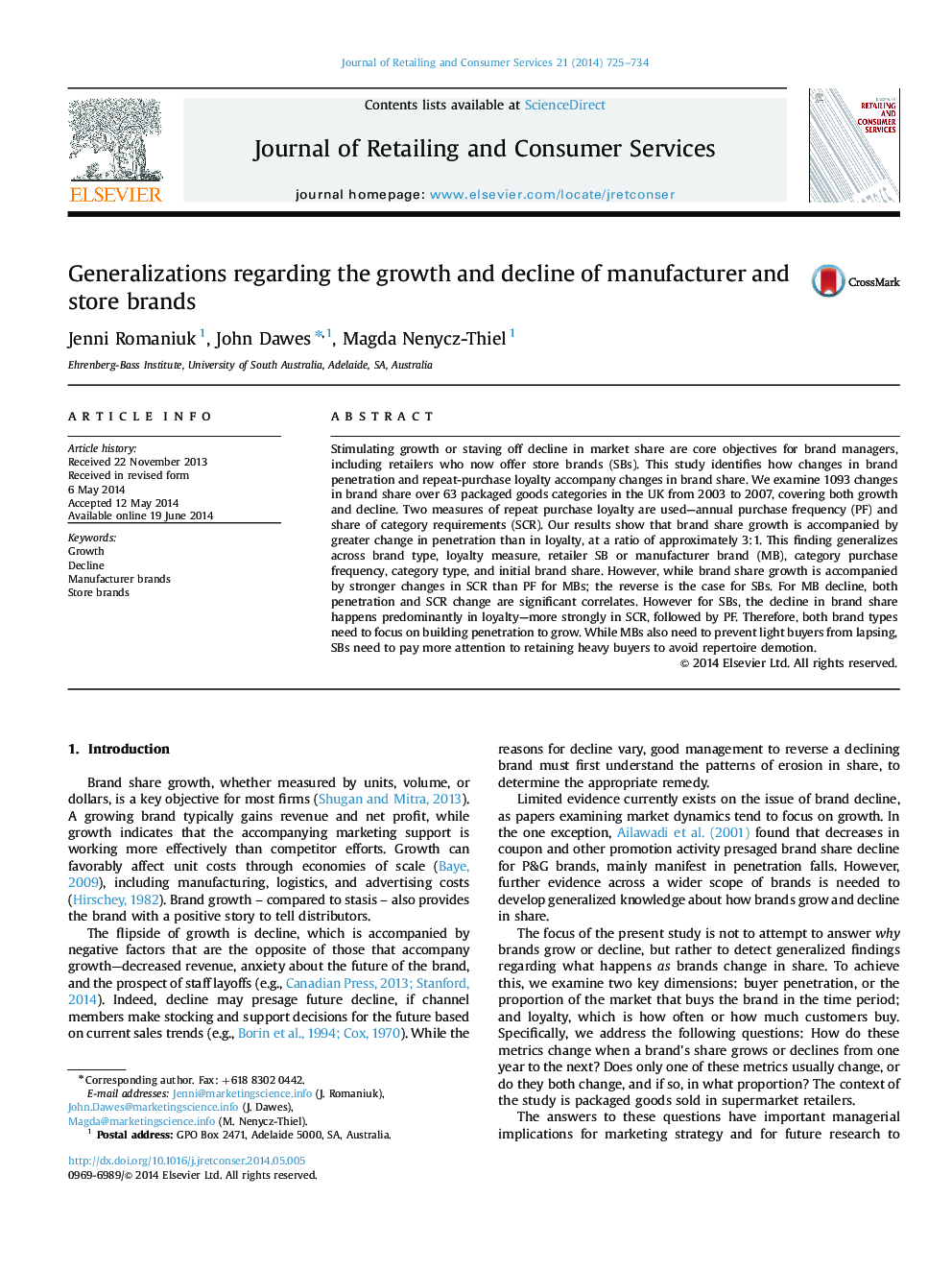| Article ID | Journal | Published Year | Pages | File Type |
|---|---|---|---|---|
| 1029001 | Journal of Retailing and Consumer Services | 2014 | 10 Pages |
•Study identifies how brand penetration and loyalty change as market share changes.•Analyzed are growing or declining brands in 63 UK product categories.•Manufacturer and Store brands are considered.•Growth sees penetration change more than loyalty with a ratio approximately 3:1.•Decline sees the same ratio for manufacturer brands, store brands decline differently.
Stimulating growth or staving off decline in market share are core objectives for brand managers, including retailers who now offer store brands (SBs). This study identifies how changes in brand penetration and repeat-purchase loyalty accompany changes in brand share. We examine 1093 changes in brand share over 63 packaged goods categories in the UK from 2003 to 2007, covering both growth and decline. Two measures of repeat purchase loyalty are used—annual purchase frequency (PF) and share of category requirements (SCR). Our results show that brand share growth is accompanied by greater change in penetration than in loyalty, at a ratio of approximately 3:1. This finding generalizes across brand type, loyalty measure, retailer SB or manufacturer brand (MB), category purchase frequency, category type, and initial brand share. However, while brand share growth is accompanied by stronger changes in SCR than PF for MBs; the reverse is the case for SBs. For MB decline, both penetration and SCR change are significant correlates. However for SBs, the decline in brand share happens predominantly in loyalty—more strongly in SCR, followed by PF. Therefore, both brand types need to focus on building penetration to grow. While MBs also need to prevent light buyers from lapsing, SBs need to pay more attention to retaining heavy buyers to avoid repertoire demotion.
